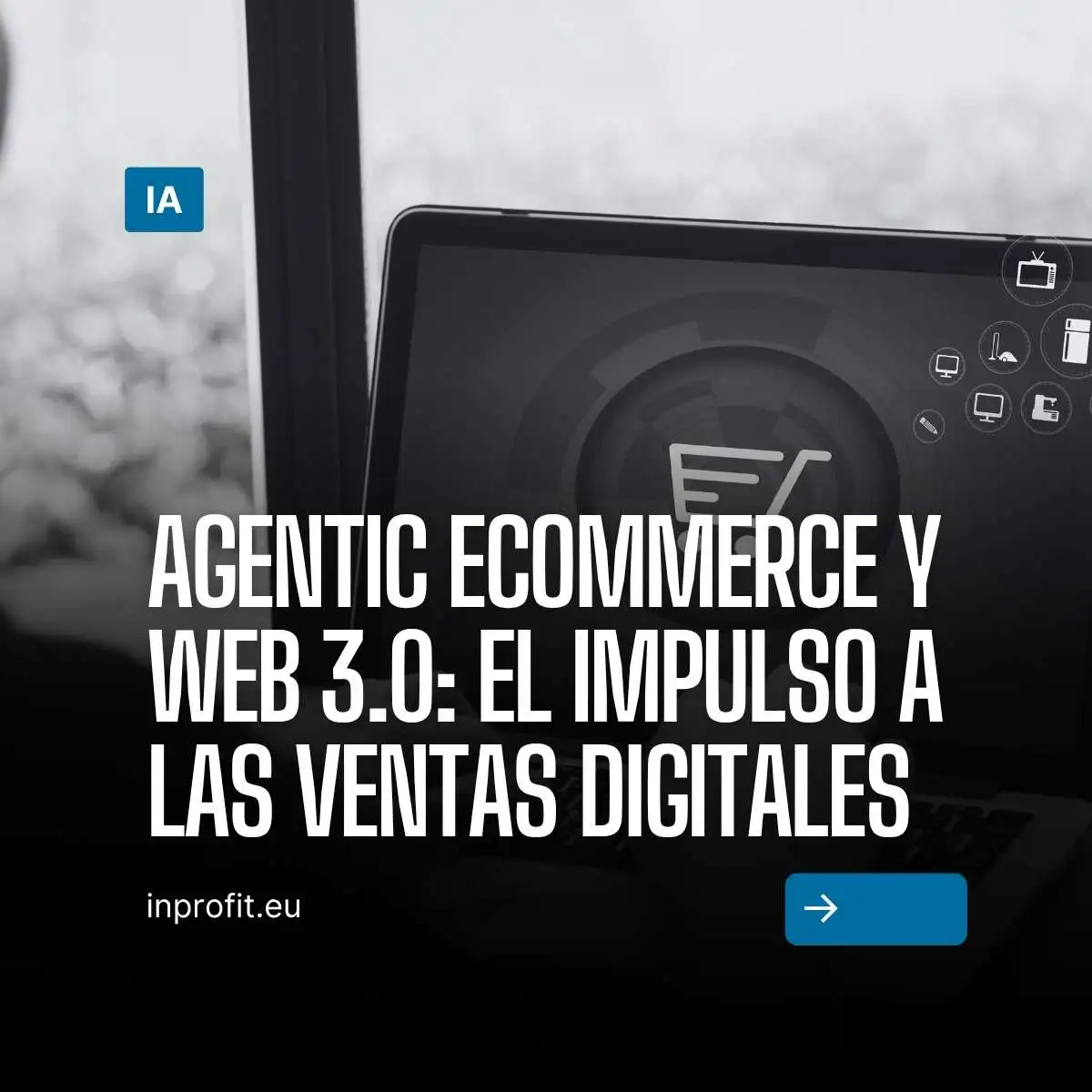Agentic ecommerce is no longer a futuristic. We are talking about shopping experiences where autonomous AI agents research, compare, negotiate and can even close tasks for us, reducing friction and increasing conversion.
Global organizations are starting to make moves and the standardization of trusted agents is underway, a sign that this wave is coming with a vengeance.
What do we mean by agentic ecommerce?
Beyond chatbots, an agent acts with goals, context and memory. It can listen to needs, query inventory and margins, compare across multiple catalogs, apply business rules, customize recommendations and execute steps (e.g., add to cart, schedule a replenishment or launch a return). This is the idea that companies in the ecosystem already define: agents that “close the loop” of the task with minimal human intervention.
Use cases that already work
- Shopping assistants who solve “I need a look for X event with Y budget”, with real availability and matching accessories.
- Replenishment and post-purchase: agents that detect usage, alert and repurchase consumables in the optimal window.
- Support and service: manage changes, warranties and refunds following policies, with no downtime.
(Yes, this directly impacts AOV, repeat rate and NPS).
Web 3.0 vs Web3: which web is it all based on?
It is convenient to separate concepts because they are often mixed up:
- Web 3.0 (Semantic/AI Web): “intelligent” web that understands context, connects data and empowers assistants.
- Web3 (decentralized): identity and value on blockchain, with wallets, smart contracts and data ownership by the user.
Agentic ecommerce today relies mostly on layer 3.0 (data + AI). However, integrating with Web3 identity and payments adds differential cases (e.g. tokenized loyalty, traceability or sovereign data agreements). Maintaining this distinction will help you avoid technical and strategic misunderstandings.
Market signals, why is this a priority?
- Payments and agent security: protocols emerge to distinguish good agents from malicious bots, paving the way for secure autonomous purchases.
- Retailers enabling conversational shopping: integrations with wizards that enable discovery, planning and payment within chat. The promise is not just to “search better,” but to shop faster from a natural interface.
Want to see how this fits into your current funnel? Ask Inprofit for a demo and we’ll land it in your category.
Blueprint: how to go from chatbot to selling agent
1) Business brief and restrictions
Define quantifiable objectives (e.g. +10% conversion rate in
2) Minimum Viable Architecture (MVP)
- LLM + tool orchestration: to reason and take actions (catalog, payments, shipments).
- Vectors/semantics: search and retrieval on catalog, descriptions and policies.
- Connectors: ERP/PIM, real-time inventory, payment gateway, order management.
- Customer context: preferences, history, affinities and session tokens, GDPR compliant.
- Guardrails: rate limits, moderation, policy checks before booking stock or launching payments.
At Inprofit we work with agent orchestrators compatible with your current stack and with connectors to common PIM/ERP.
3) Design concrete “Tasks”.
Start with limited and measurable missions:
- Find me the best pack for X with Y budget.
- If SKU A is missing, suggest B/C with equivalents.
- Launches contextual cross-sell (accessories) with a limit of 10% of the ticket.
- Manages a partial refund following policy Z.
4) Experience and confidence
- Transparency: explain what the agent does, why he/she recommends and on what basis.
- Human control: option to check cart and confirm sensitive steps.
- Privacy and consent: granular, clear; opt-in for deep personalization.
5) Measurement from day 1
Define agent KPIs: mission success rate, time to resolution, assisted AOV, % support savings, fallback to human ratio, refunds for bad recommendation and satisfaction.
Quick Frequently Asked Questions
Do I need blockchain to do agentic ecommerce?
No. You can build a
Is it possible to open the checkout without “risk”?
The first serious deployments contemplate agent-specific trust and anti-fraud controls and human validations at critical steps. This is the direction the payments industry is taking to distinguish legitimate agents.
Is this already done by the big guys?
Yes: there are retailers activating in-app purchases and brands setting up agent stacks for discovery, post-purchase and operations.
Recommended Roadmap
Day 0-15 – Discovery and data
Map journeys, identify quick wins and data gaps. Prepare sources: clean catalog, standardized attributes, clear business rules and policies.
Day 16-45 – Agent MVP
A high impact mission (e.g.
Day 46-75 – Pilot A/B
Expose agent to 10-20% of qualified traffic. Measure: resolution rate, assisted AOV and bounce. Itera prompts, affinities and pricing logic.
Day 76-90 – Escalation and automation
Unlocks additional missions (returns, post-purchase, cross-sell). Integrate loyalty and proactive personalization. Document playbooks and prepare 24/7 monitoring.
Practical tips for not dying in the attempt
- Start with a vertical slice: a category, a market, a language. Improve there and then scale.
- Rewrite descriptions with consistent attributes; your agent will only be as good as your PIM.
- Prompt economics: version, tag and measure costs per mission in LLMs and AI solutions.
- Fail-safe and human-in-the-loop: in the face of high uncertainty, the agent asks or drifts.
- Compliance as a feature: GDPR, minimum data retention, decision traceability.
Where does Web 3.0 fit in here?
Web 3.0 brings semantics and context: better retrieval on catalog/policies, understanding of complex queries and reasoning to provide actionable answers (“this pack fits by size, stock and compatibility”). Large cloud providers are already talking about this agentic shift in retail, where AI acts and not just responds.
In short, agentic ecommerce is not just a trend: it is a new experience and operational architecture. Brands that structure data, define missions and set up guardrails first will capture share while the rest continue to “test chatbots”.
At Inprofit we design and implement AI agents with a business focus, from MVP to international scaling. Shall we talk about your case? Book a meeting and let’s start selling with agents.



